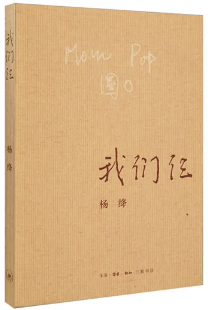Human beings around the world delight in fiery foods. Thai, Mexican, Chinese, Indian, Ethiopian – the cuisines that can take the roof off your mouth are numerous and flavourful.
世界各地都有嗜辣如命的人。泰国、墨西哥、中国、印度、埃塞俄比亚……很多国家都有能让你爽辣翻天的、品类繁多的香辛调味料。
Ranking the world’s most spicy peppers and comparing the most awe-inducing dishes is a common pastime, even if, past a certain point, the distinctions are somewhat moot. Who can say, subjectively speaking, that one Indian restaurant’s Widower Phaal, made while wearing goggles with chilis that rank about 1,000,000 on the Scoville Scale – an international measurement of pungency – is necessarily a fierier experience than the notorious Korean Suicide Burrito?
很多人闲来无事,会喜欢给世界最辣辣椒排个名次,并且把这些让你张嘴嘶嘶喘气的东西比较一番,哪怕——从某种程度上来说,很难判别不同辣椒之间的细微差别。谁能客观地说印度餐馆的"鳏夫咖喱"(Widower Phaal),用国际通用史高维尔辣度单位(Scoville Scale)达100万的辣椒做成,工人在制作时甚至要戴护目镜,要比韩国自杀玉米卷饼(Suicide Burrito)更辣?
There’s plenty of burn to go around: more common dishes include vindaloo with ghost peppers and hot pot from Sichuan, where you must part a swarm of chillis bobbing in a sea of broth to fish out tender, fiery morsels of meats and vegetables.
有很多菜肴都会让你口舌冒火:常见的有用魔鬼辣椒烹制的咖喱肉,以及需要从浮满一层辣椒的汤汁里搜寻鲜嫩辛辣的肉片和蔬菜的四川麻辣火锅。
As you savour these intense tastes, however, you may wonder, why do some cuisines compete for the title of spicy champion, while others feature barely the hint of a burn?
当这些食物灼热你的舌头时,你可能想知道:为什么有的菜系无辣不欢,而有的菜系则把辣椒完全排除在外?
This is a question that has intrigued anthropologists and food historians for some time. Indeed, it’s a curious truth that places with warm climates do seem to have a heavier preponderance of hot and spicy dishes. That may have something to do with the fact that some spices have antimicrobial properties, studies have found.
这样一个问题,也同样困扰着人类学家和食品历史学家。有趣的是,气候温暖地区的人们更嗜好辛辣食物。有研究表明,这或许是某些辣椒有杀菌作用的缘故。
In one survey of cookbooks from around the world, researchers note: “As mean annual temperatures (an indicator of relative spoilage rates of unrefrigerated foods) increased, the proportion of recipes containing spices, number of spices per recipe, total number of spices used, and use of the most potent antibacterial spices all increased.” In hot places, where before refrigeration food would have gone off very quickly, spices might have helped things keep a bit longer – or at least rendered them more palatable.
在针对世界各地的菜谱进行的一项研究报告中,研究者这样写道:"随着年平均气温(气温越高,未冷藏食物的腐败速度就越快)的升高,包含香辛料的菜谱比例、单一菜肴中的香辛料用量、香辛料总用量、以及杀菌能力最强香辛料的用量都随之增加。"冷藏技术出现之前,在食物迅速腐败的热带地区,香辛料曾经帮助人们延长食物保鲜期,至少让食物更加美味可口。
It’s also been suggested that because spicy food makes most people sweat, it might help us to cool off in hot parts of the world. The evaporative cooling effect that happens when we perspire is indeed useful in maintaining a body’s heat balance. In a very humid climate, though, it doesn’t matter how much you sweat: that evaporation won’t come to your rescue because there’s already too much moisture in the air. One study of people who drank hot water after exercise showed that they did cool down slightly more than those who drank cold water, but only in situations with low humidity. Thailand in August, that ain’t.
还有说法称,大多数人吃辛辣食品都会出汗,因此在热带地区吃辣会帮助人们降低体温。汗液的蒸发冷却效应有助于保持体温平衡。不过,在湿度极大的环境里,你出再多的汗也没用:空气中的水分已经够多,因此汗液蒸发不会带走热量。针对锻炼后喝热水人群的调查发现,他们的体温下降速度的确略高于喝凉水者,但这只在低湿度环境下才会有效。在8月的泰国,这一点都不成立。
But spice is hardly limited to the tropics. While chilli peppers are originally from the Americas, this particular kind of heat grew widespread in the 15th and 16th Centuries, travelling with European traders. Other spices – not spicy in the same way as peppers, perhaps, but still strongly flavoured and bringing an extra oomph to a dish – had been circulating in Europe for centuries, with ginger, black pepper, and cinnamon brought in from the east.
然而,对香辛料的嗜好绝不仅限于热带地区。辣椒原产于美洲,于15至16世纪随着欧洲商人的脚步扩散到了全世界。其他那些不如辣椒辣,但仍以各自独特的口味给菜肴增色的香辛料已经在欧洲流行了很多个世纪,姜、黑胡椒和肉桂则是从东方输入。
Heavily spiced dishes were the darlings of many cuisines we currently don’t think of for their zing. Numerous recipes in one 18th-Century British cookery book include potent doses of mace, cloves, and nutmeg, for instance. What happened?
今天以清淡口味见长的很多菜系都曾经喜好辛辣口味的菜肴。例如,有一本18世纪英国菜谱里就有很多用肉豆蔻仁、丁香和肉豆蔻粉调味的菜肴。那么后来到底发生了什么?
Well, one possibility is that it became a bit uncouth to like quite so many flavours in one’s food, as Maanvi Singh has written over at The Salt. What we now consider classic European cuisine has a tendency to focus on pairing like flavours with like, rather than bringing in a riot of strong, contrasting ones. That may be because, as spice prices plummeted in Europe in the 1600s and it became easier for just anyone to lace their food with them, tastemakers fell out of love with them.
可能如同曼威.辛格在《盐》一书中所述,嗜好辛辣口味食物会让他人感觉此人比较粗俗。我们今天已经知道,欧洲菜系喜欢把彼此类似,而非彼此冲突的口味进行组合。17世纪时,欧洲香料价格出现暴跌,所有人都买得起吃得起这些香料,厨师们迅速对它们失去了兴趣。
Shifting the goalposts for high-end food, they began to emphasise dishes where the focus was the purest essence of the basic ingredients, combined with flavours that served to bring that out. In a word – it may have been snobbery, Singh writes, that erased the thrill of spice from many European palates.
为了打造新的高端菜肴,厨师们开始转而追求简单纯净的基础口味,然后用调味品凸显这种口味。用辛格的话说,对所谓身份地位的追求最终使很多香辛料从欧洲人的餐桌上消失。
Indeed, the role of human culture in determining whether spice is hot or not cannot be underestimated. Like all animals, we use taste as a way to determine what’s safe to eat, and once we get used to certain flavors signalling the familiar, we like them all the more. It would not be surprising if some people, having acclimated to chillis, began to prefer them over the absence of chillis.
确实,人类文化在决定是否喜欢吃辣上发挥着很重要的作用。像所有的动物一样,人类会品尝食物的味道,将其作为判断食物是否安全的标准,我们一旦习惯了某种表明安全的食物口味,就会沉迷于它。曾经习惯吃辣的人会在无法吃辣后怀念这种味道,就是出于这个原因。
Today, we have our own reasons for eating spicy foods, and they may have more to do with adrenaline than social status or sheer flavour, per se. The physiological reaction to peppers, as we’ve discussed here before, is the result of temperature sensors in the mouth being activated. Your body responds as if you had burned it, causing you to sweat and flush, and in extreme cases vomit.
今天,每个人都有自己的吃辣理由。本质上,人们会喜欢上肾上腺素飙升的感觉,社会地位或者口味轻重之类的因素不再重要。上文说过,吃辣椒时的生理反应是口中的温度感受器被激发的结果。此时,你的身体会认为你正在被火灼烤,从而出现脸红和出汗,极端情况下甚至会呕吐。
The thrill of triggering this intense experience without (usually) any long-term effects is thought to be part of the attraction – as well as, for some chilli fiends, the bragging rights.
在(通常)没有长期不良影响的情况下,获得如此独特的体验是辣椒魅力的一部分。辣椒嗜好者们也乐于向他人夸耀自己吃辣的能力。
Antimicrobial qualities and body temperature regulation are probably not on the list of possible draws today – something to ponder, and thank your lucky stars for, as you wait for your next curry.
在准备去吃一顿咖喱大餐之前,你恐怕不会想起,其中的香辛调味料同时还有杀菌和调控人体温度的神奇功效。

新年伊始,听说有好多同学声称自己去年的读书li...

不知是不是因为今年疫情的缘故,总觉得时间过得...

2020年即将过去,本年度的【好书荐读】系列也迎...
